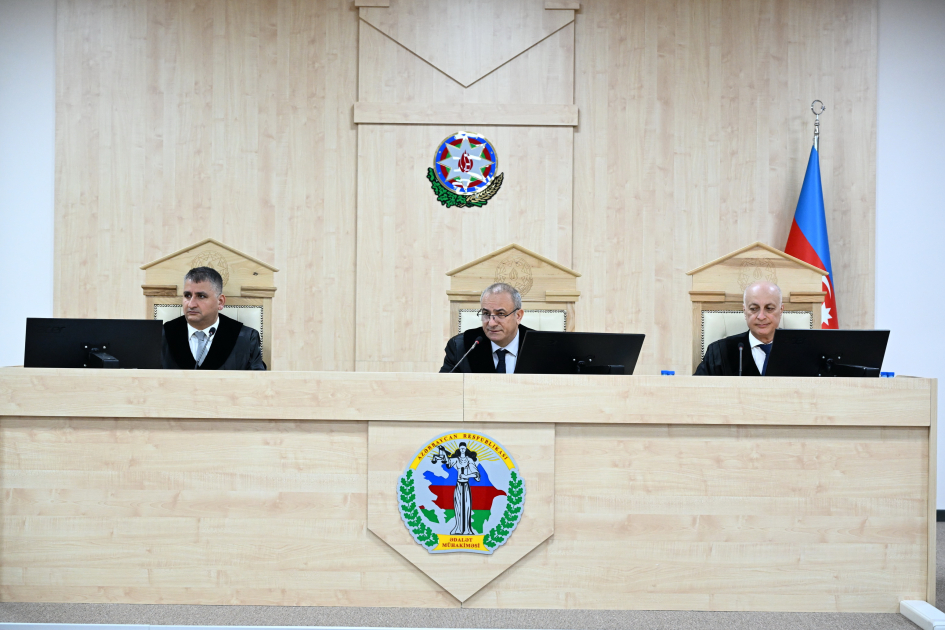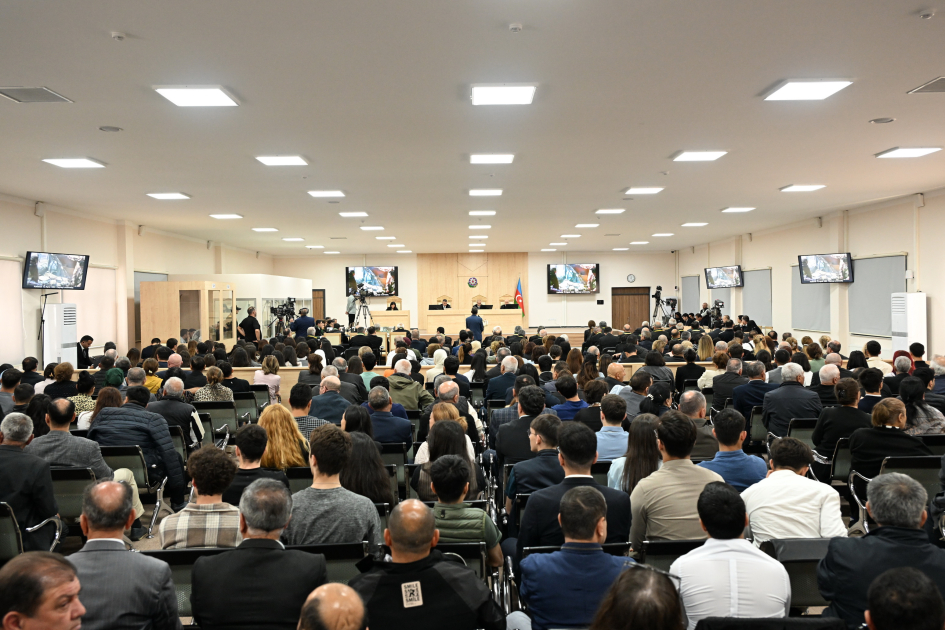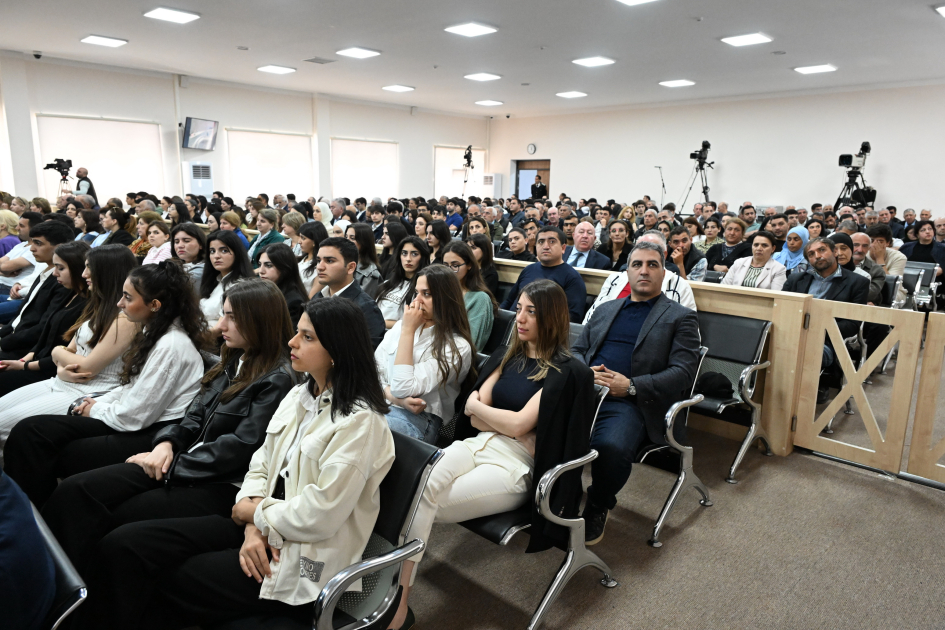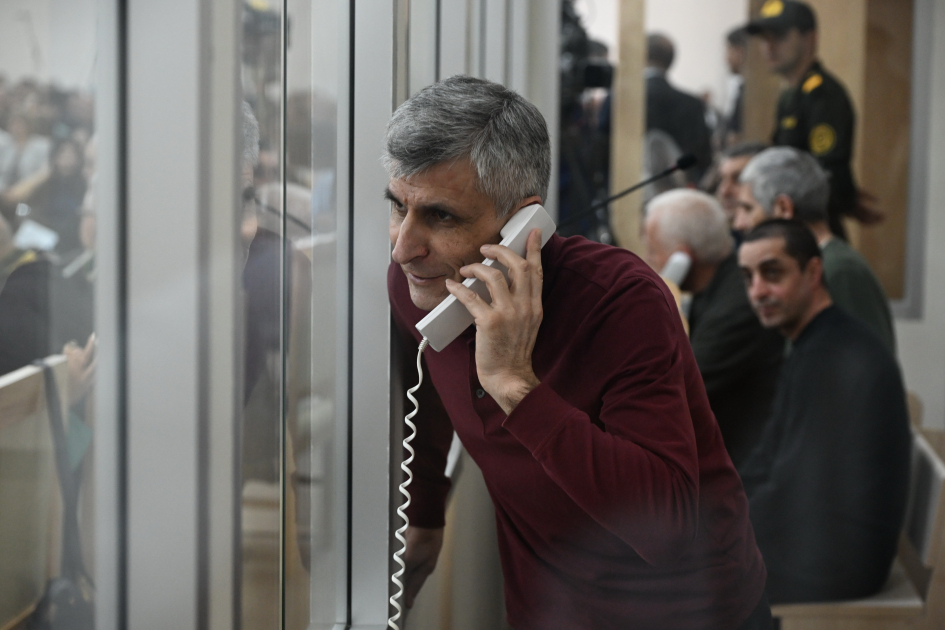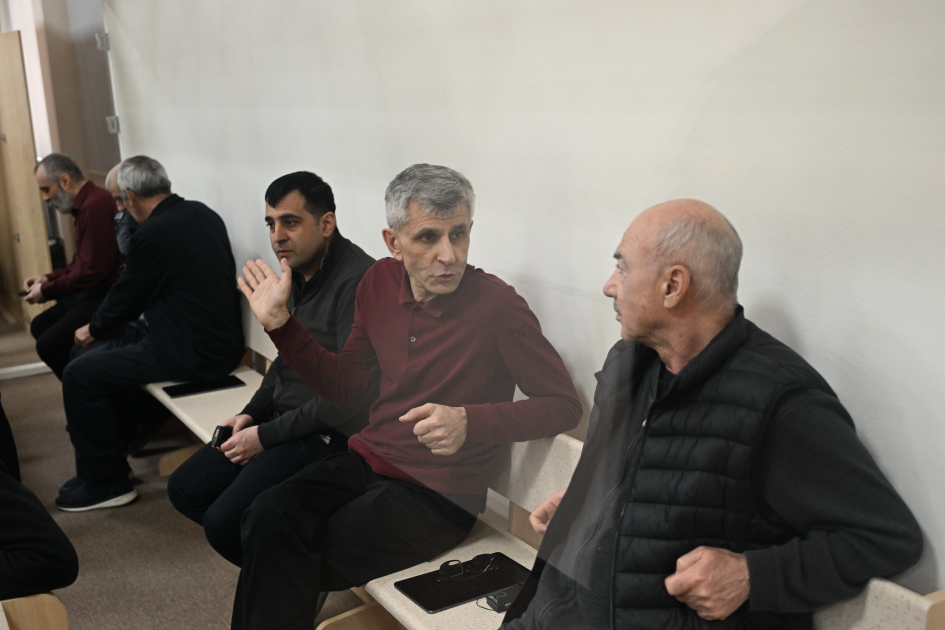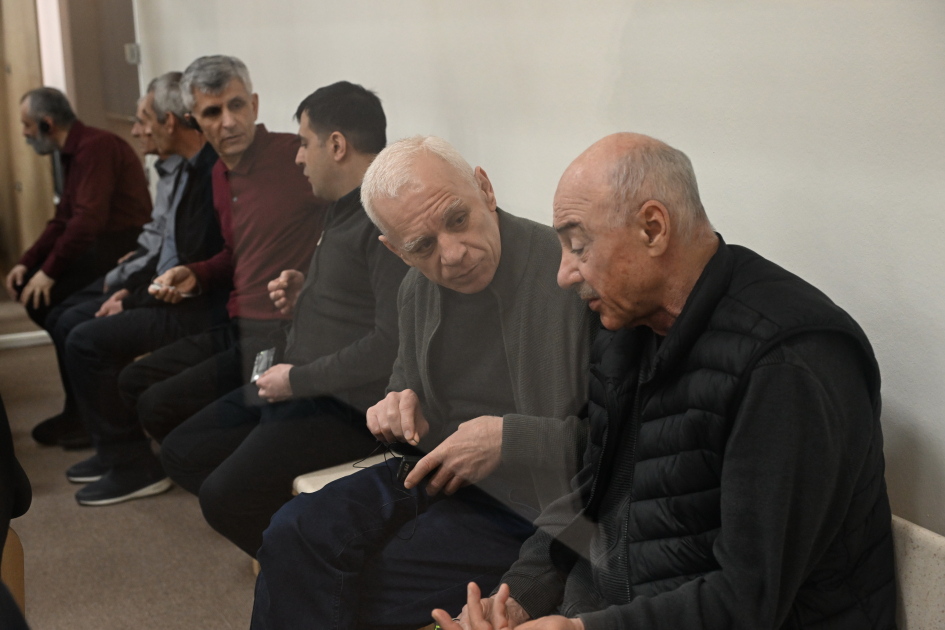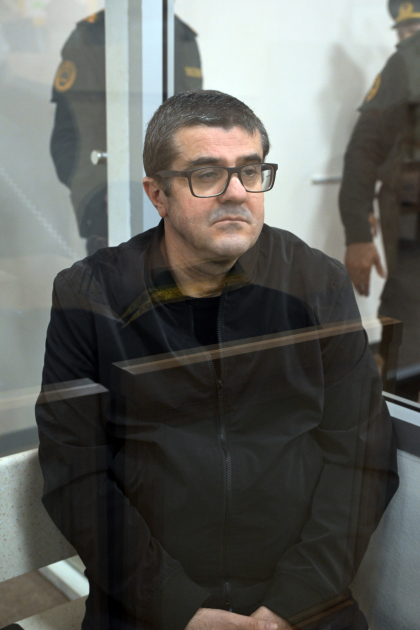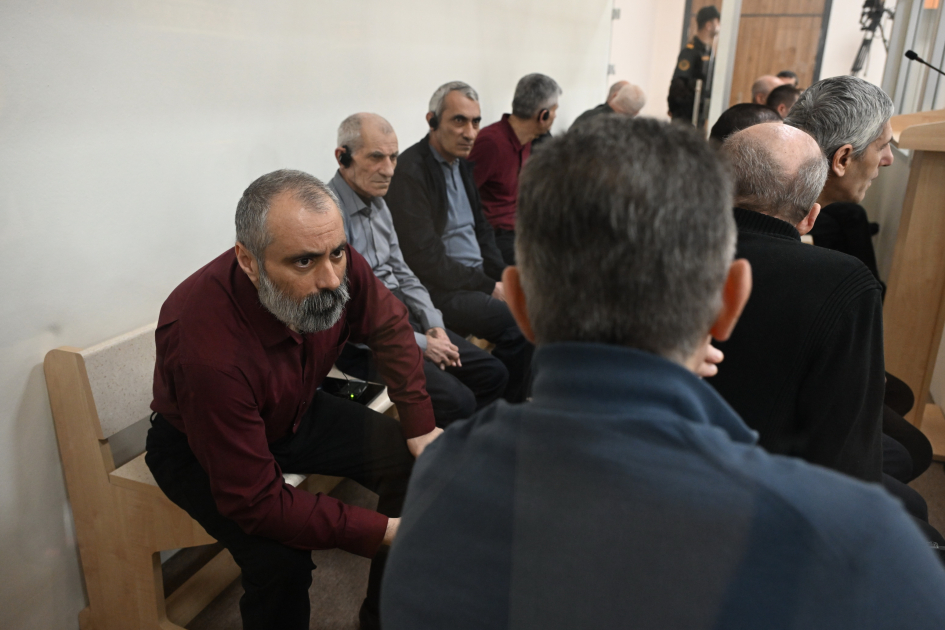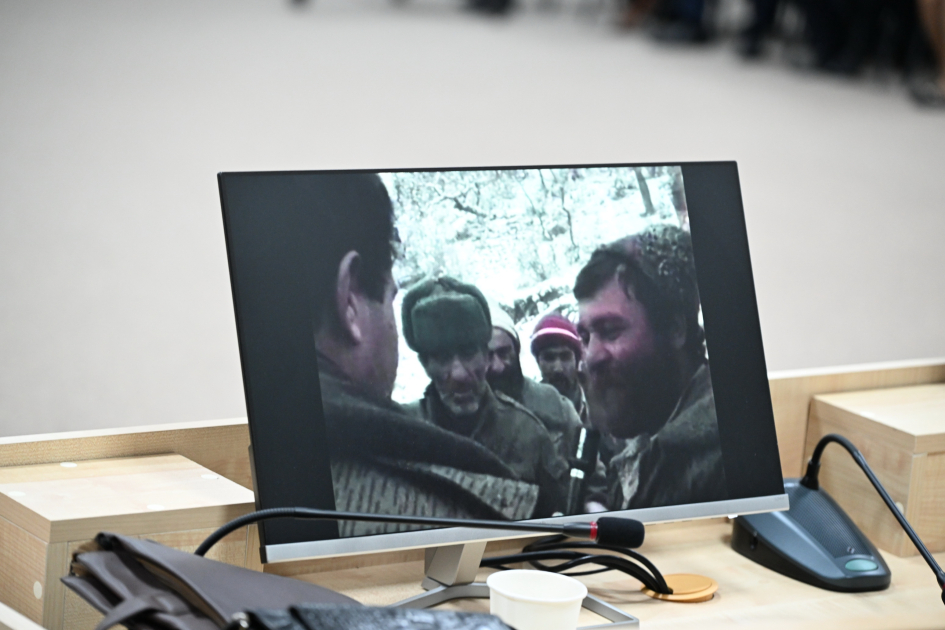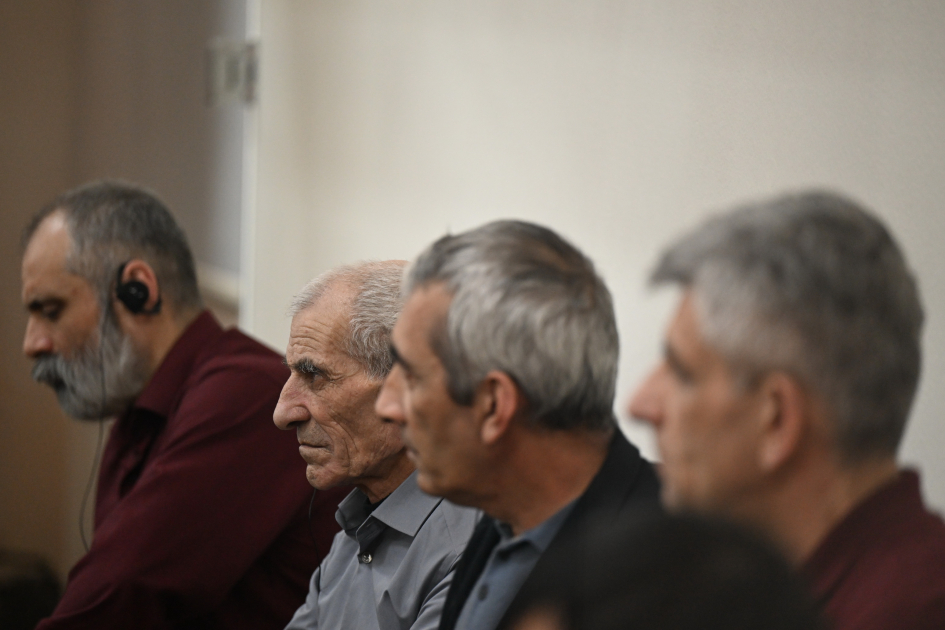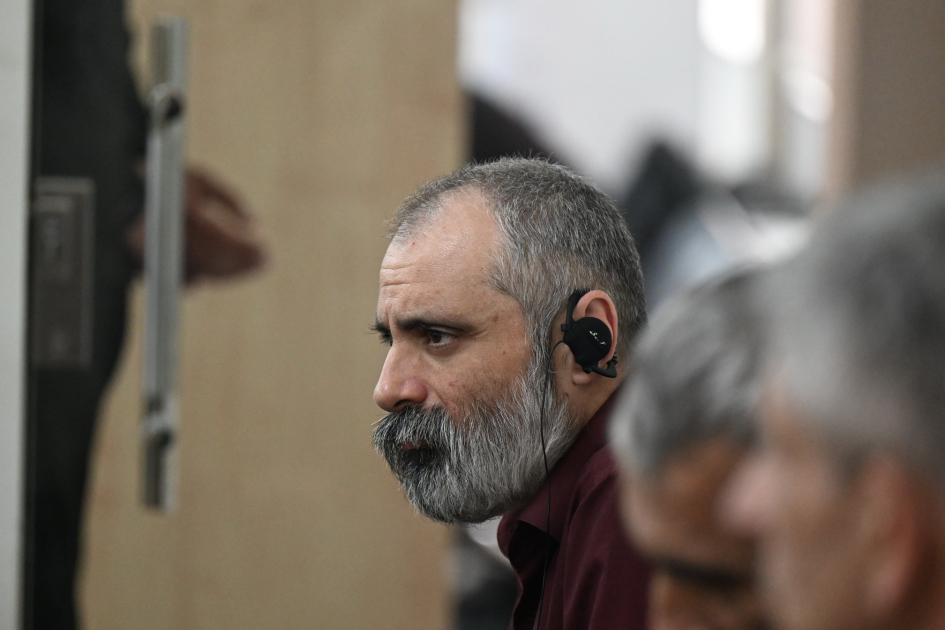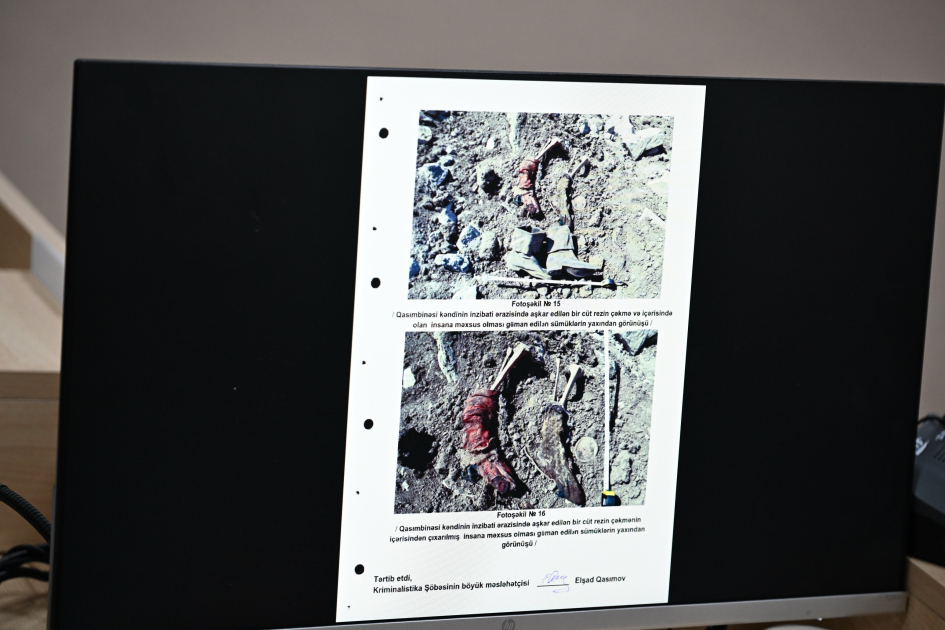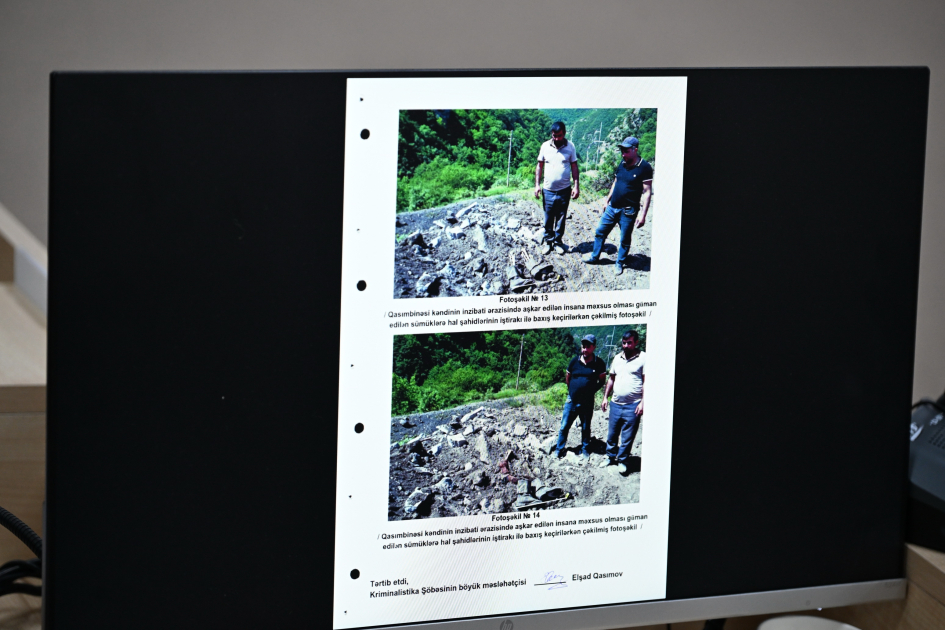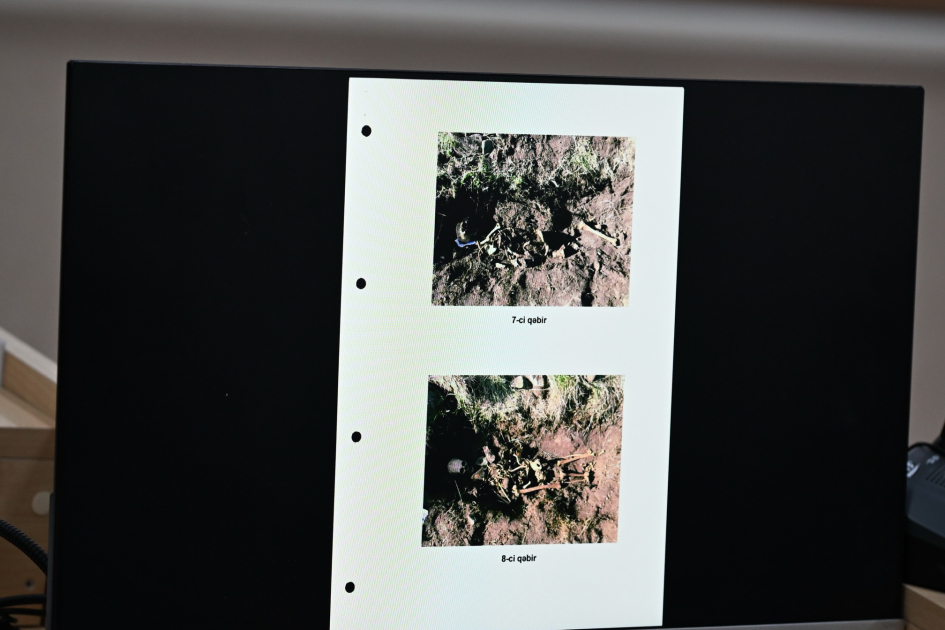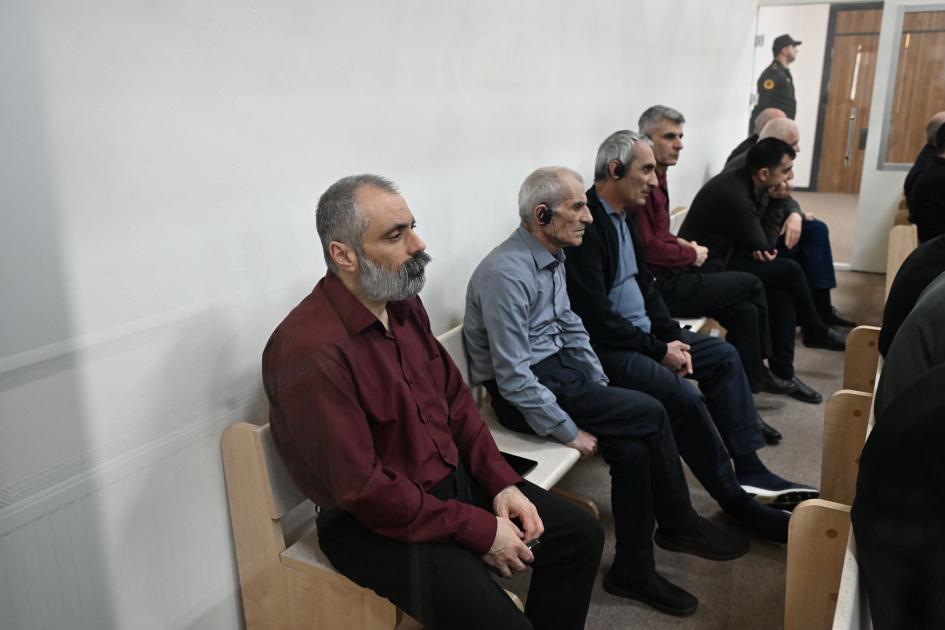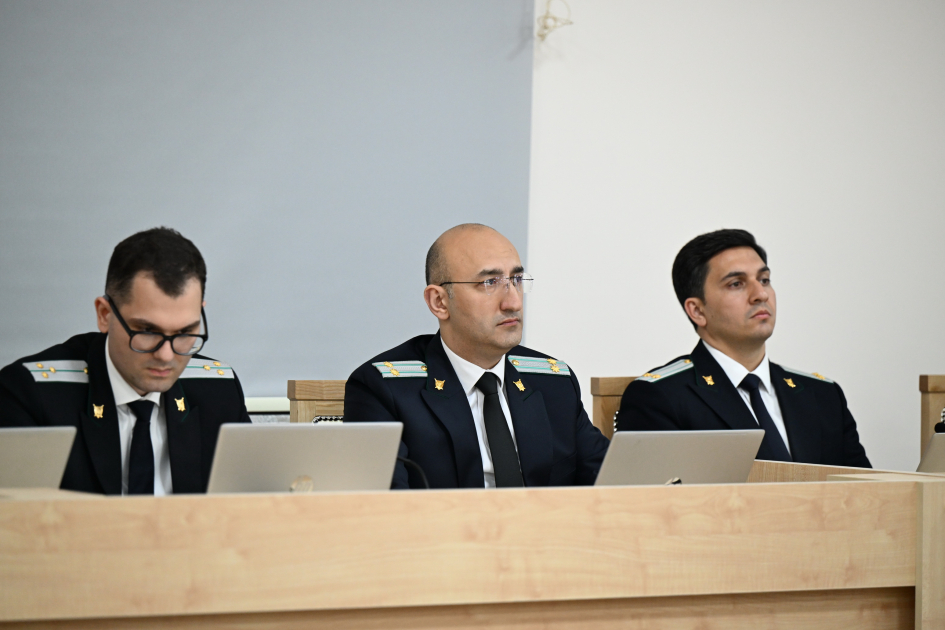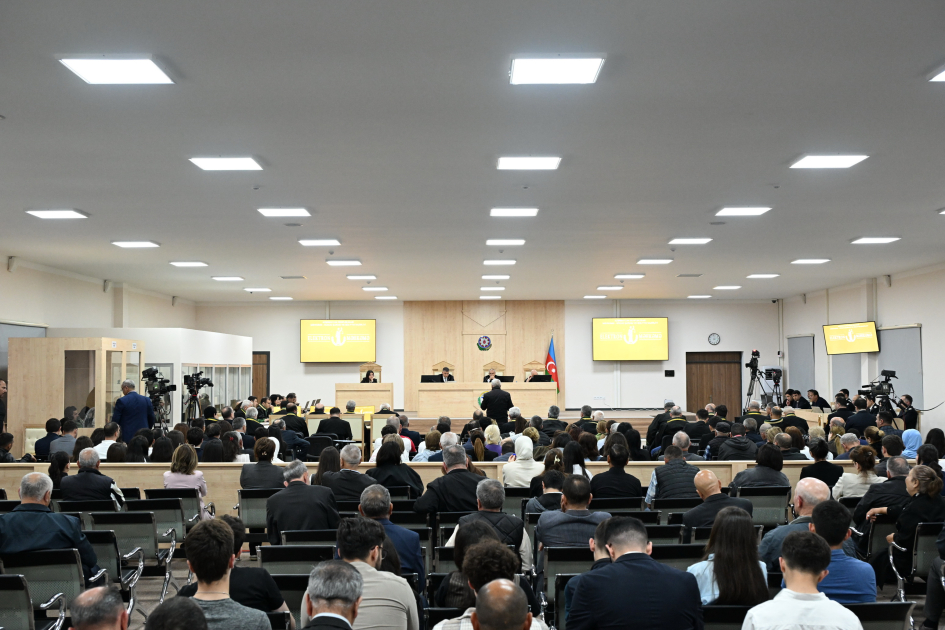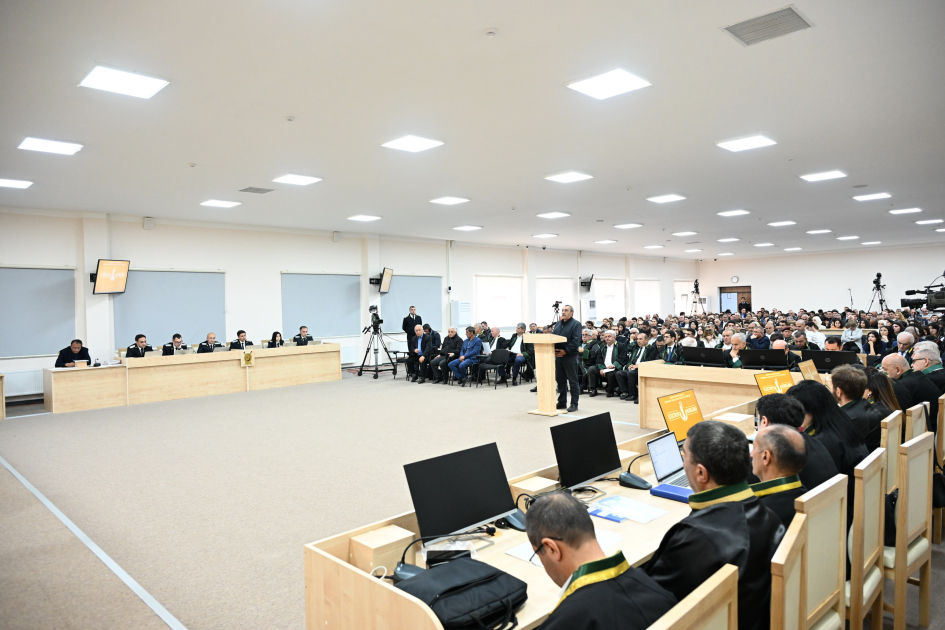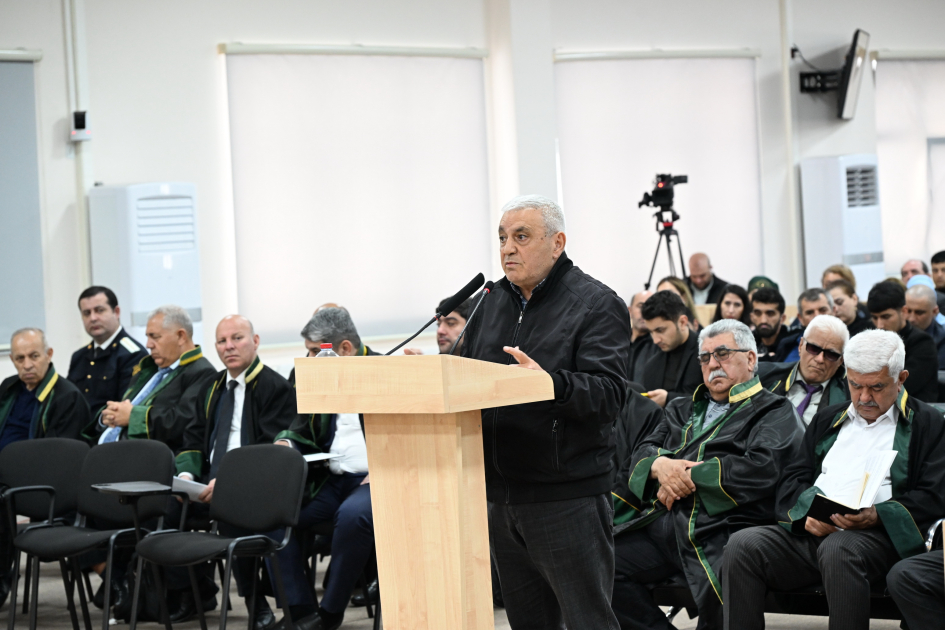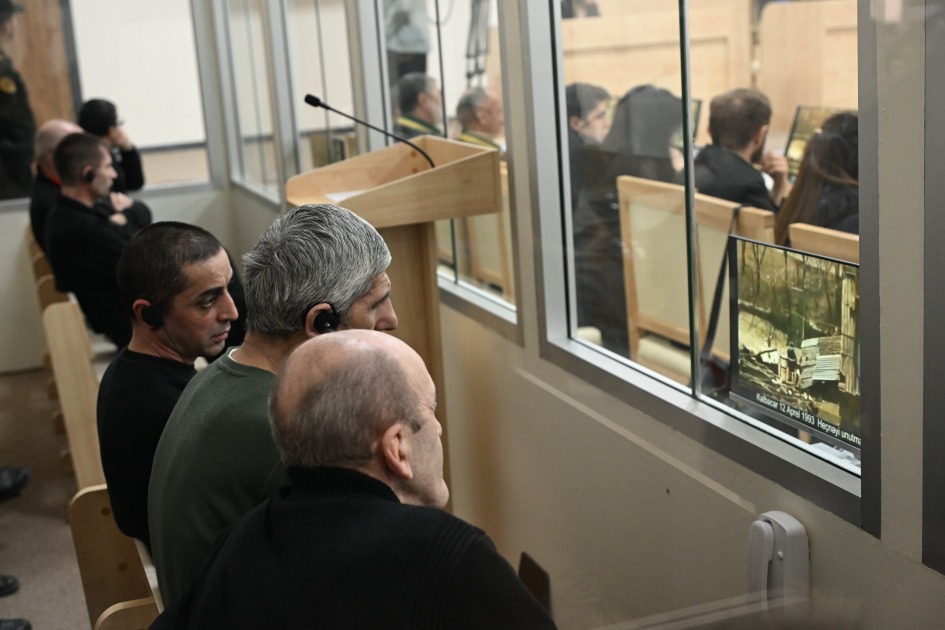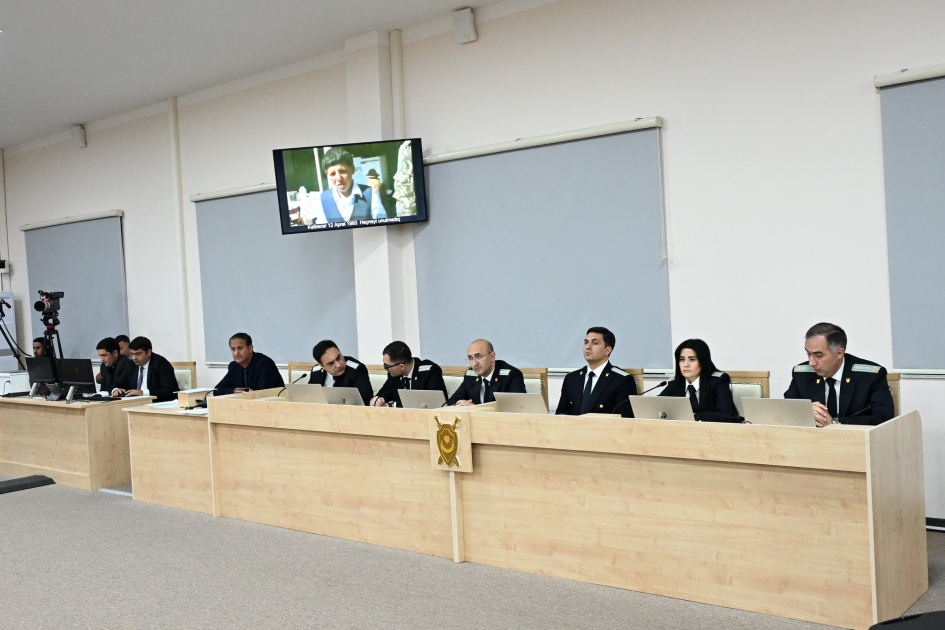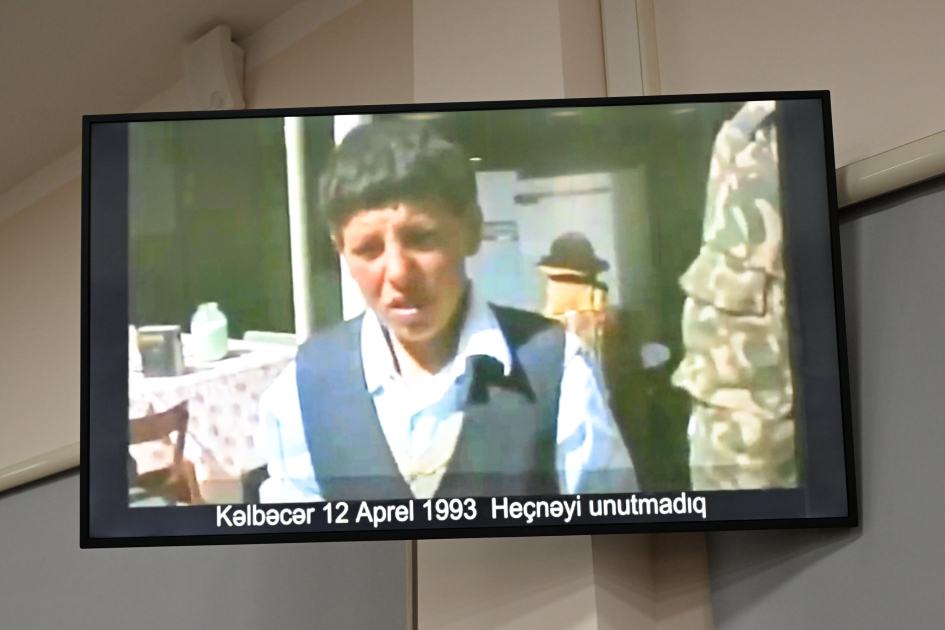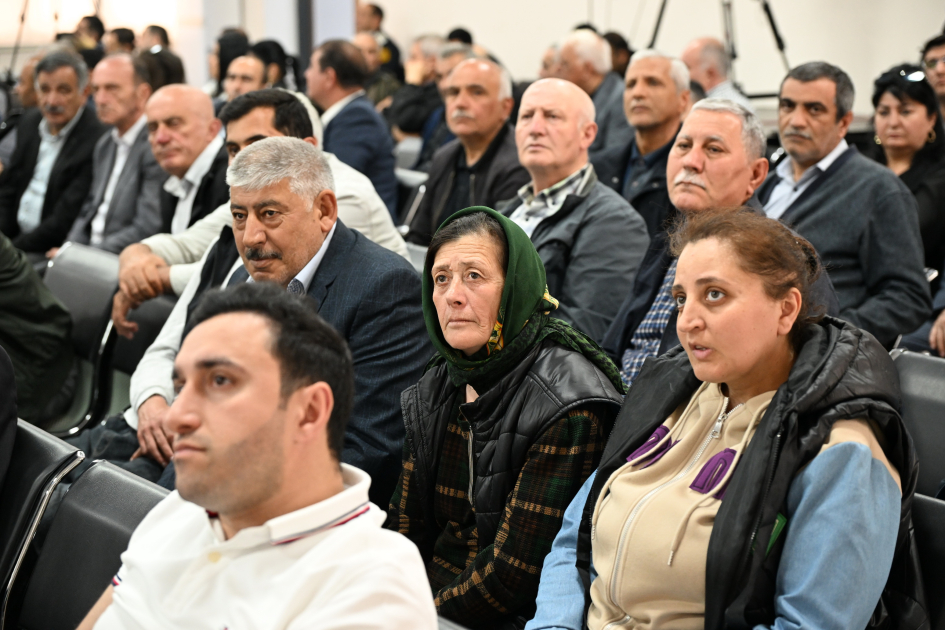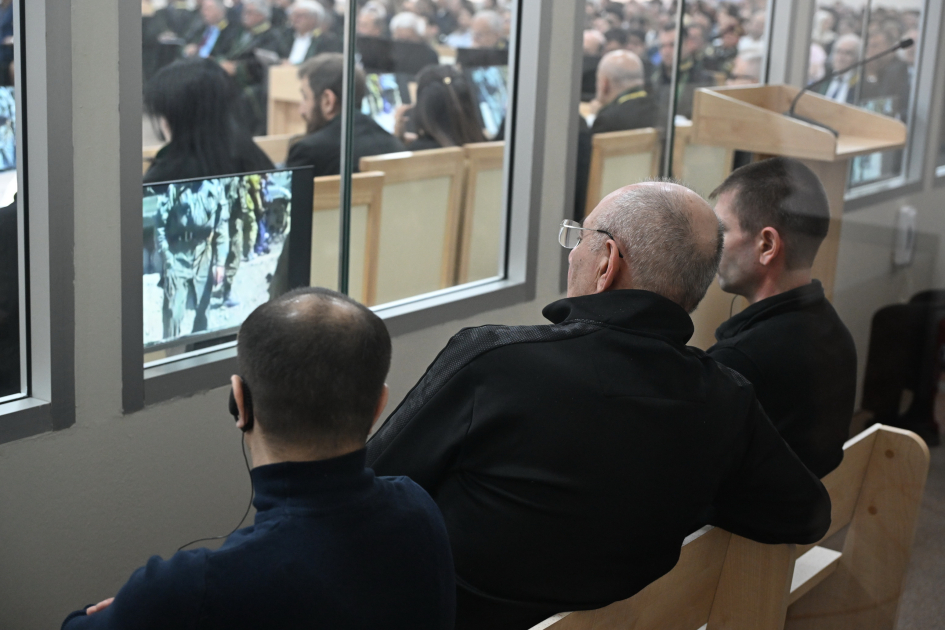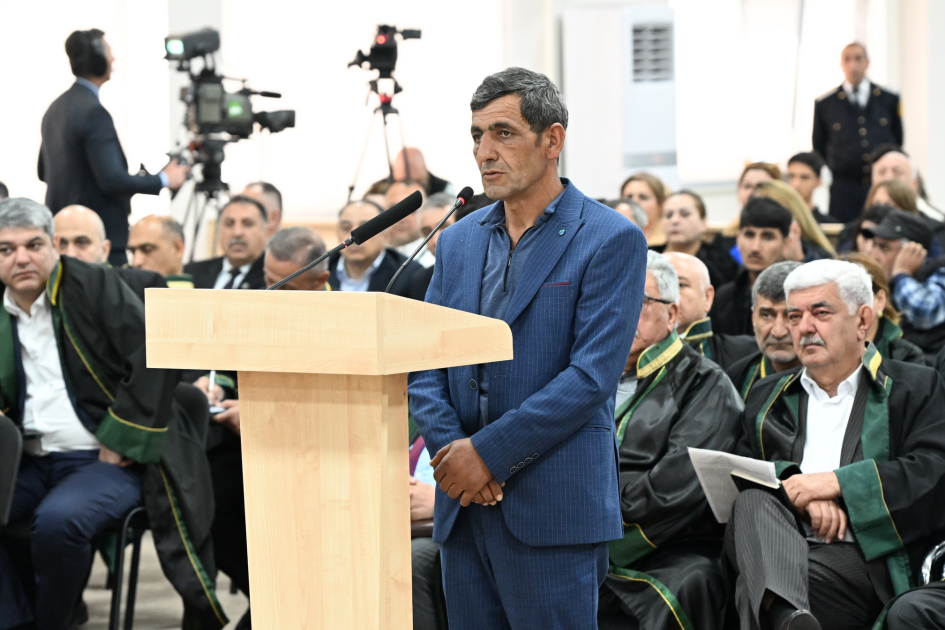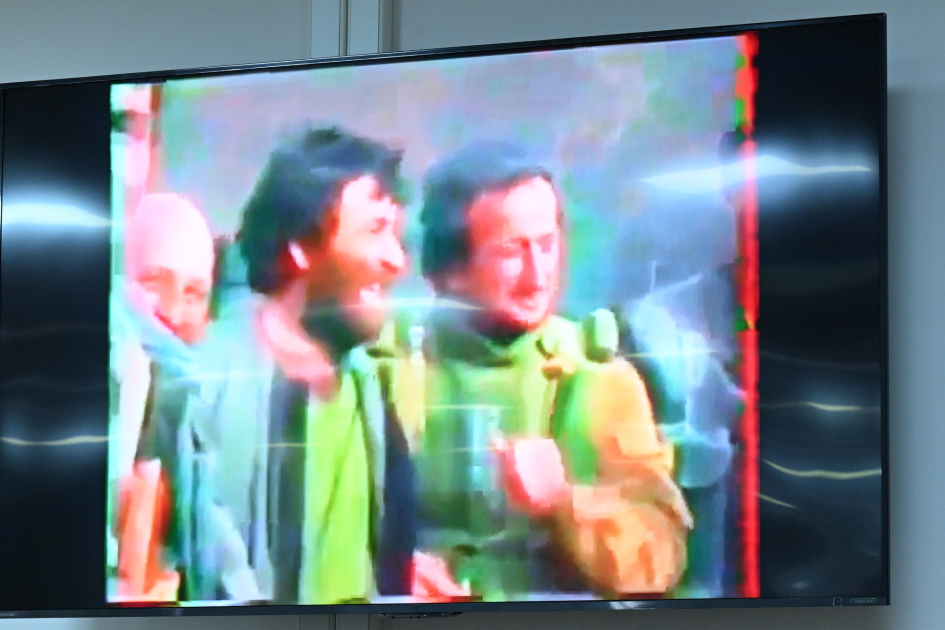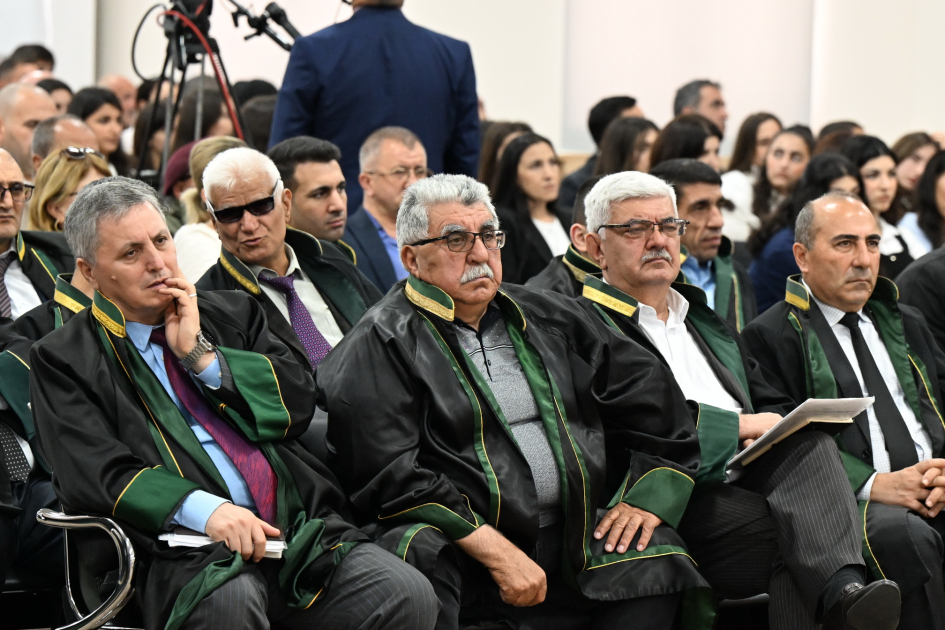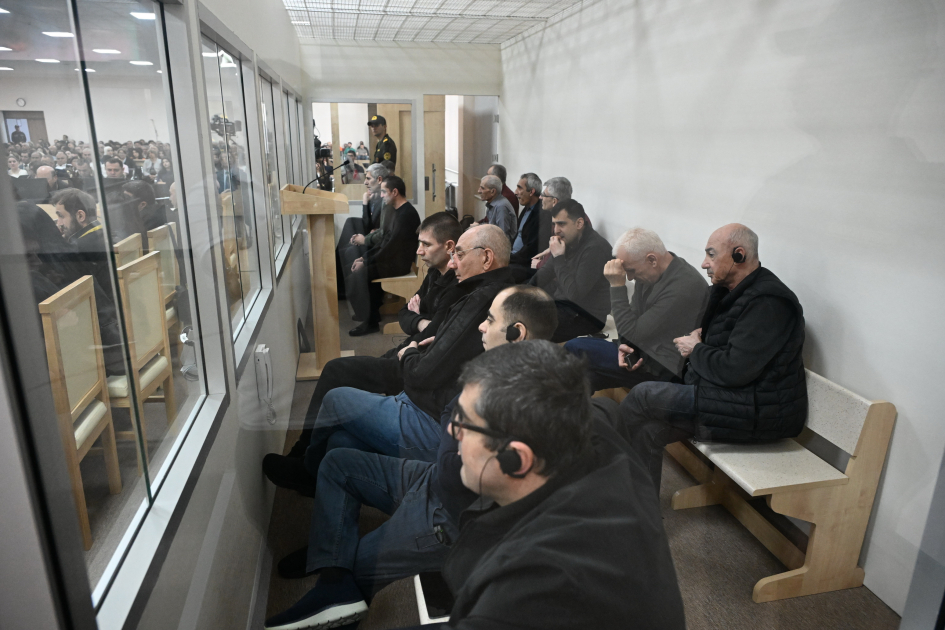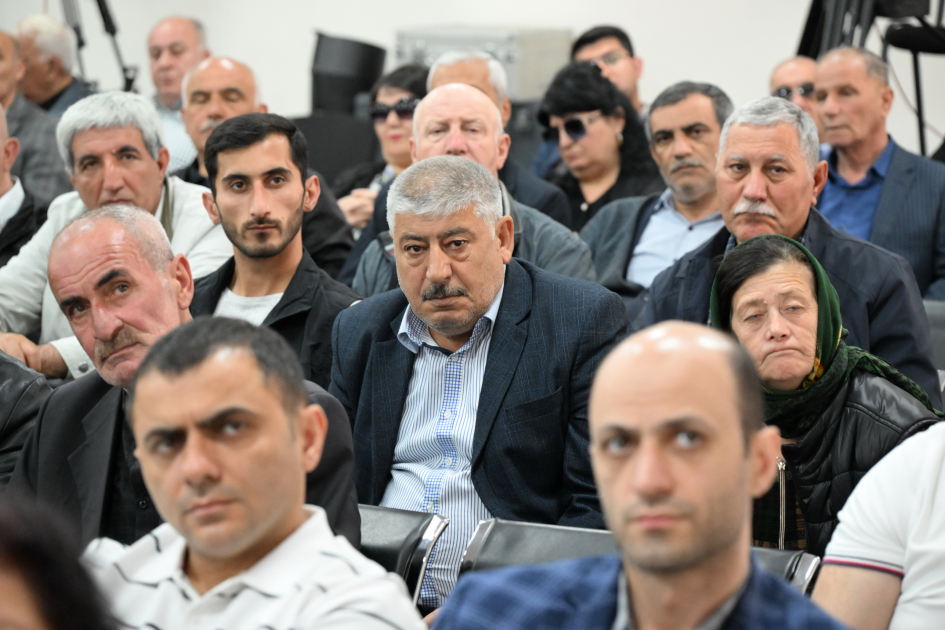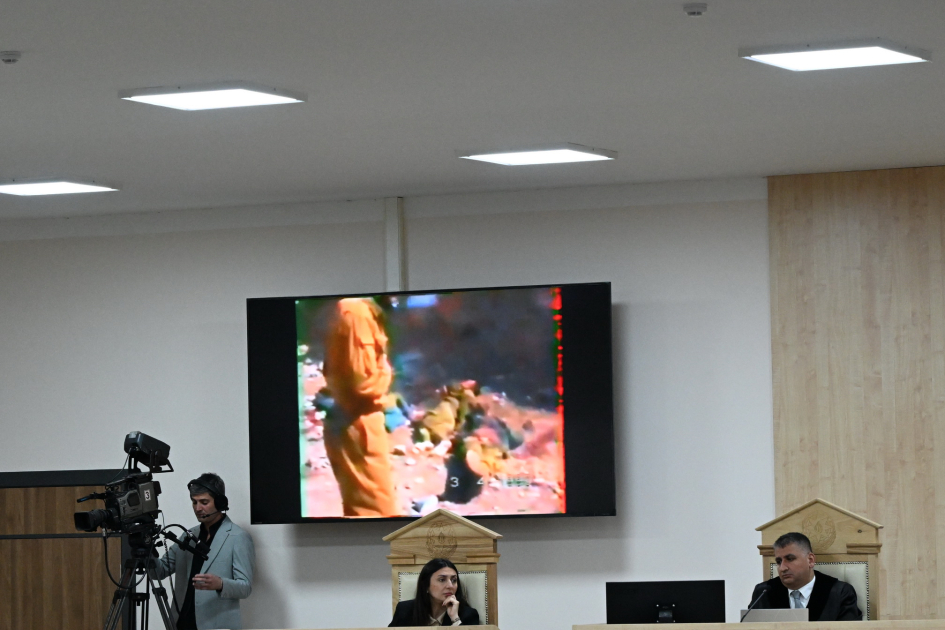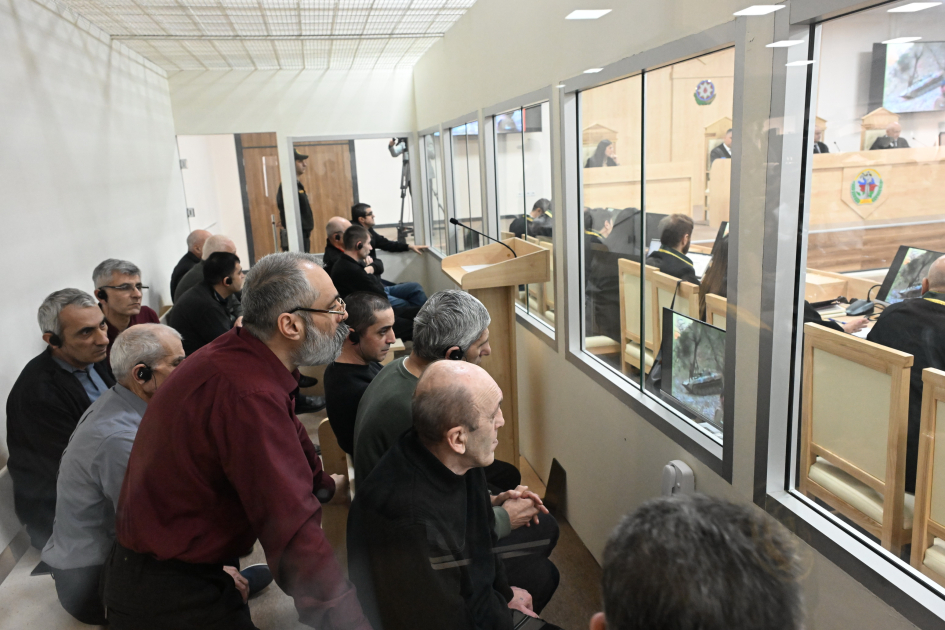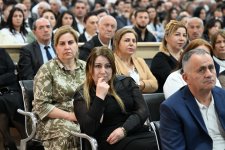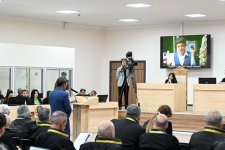BAKU, Azerbaijan, May 8. Public hearings on the criminal case against citizens of the Republic of Armenia Arayik Harutyunyan, Arkadi Ghukasyan, Bako Sahakyan, Davit Ishkhanyan, Davit Babayan, Levon Mnatsakanyan and others, who are accused of committing crimes against peace and humanity, war crimes, including the preparation and conduct of a war of aggression, acts of genocide, violation of the laws and customs of warfare, as well as terrorism, financing of terrorism, forcible seizure of power, forcible retention of power and numerous other crimes as a result of Armenia's military aggression, continued on May 8, Trend reports.
The hearings held at the Baku Military Court were presided over by Judge Zeynal Aghayev and a panel consisting of Jamal Ramazanov and Anar Rzayev (reserve judge Gunel Samadova). Each of the accused was provided with an interpreter into the language of their choice, as well as defense attorneys.
Present at the hearings were the accused and their defense attorneys, some of the victims, their legal successors and representatives, as well as prosecutors in charge of public prosecution.
Judge Zeynal Aghayev introduced the panel of judges, interpreters, etc. to those of the victims who were participating in the hearings for the first time, and also explained their rights and obligations stipulated by national legislation.
First, Assistant to the Prosecutor General for Special Assignments, Tugay Rahimli presented video footage taken by Armenians during the occupation of Kalbajar. One of the videos screened was recorded in March and April 1993.
The video footage features Armenian military personnel informing Monte Melkonyan via communication line about the military operations conducted and which territories of Azerbaijan they have occupied.
One segment featured Monte Melkonyan addressing the militants, asking: “What have we done today? Where are we now? Where were we yesterday? What did we do?”
A militant responded, reporting that they were 20 kilometers from Kalbajar.
Melkonyan went on to say that Armenian forces had advanced from the western part of Aghdara and from the direction of Aghdaban, eventually reaching Kalbajar. “By annexing Kalbajar to Armenia, the entire region will be annexed to Armenia, and many roads will become accessible. I hope that the Azeris (Azerbaijanis – ed.) will understand that it is all over,” said Monte Melkonyan, also known by the nickname “Avo.”
When asked whether Azerbaijanis had shown strong resistance, Melkonyan replied: “Yes, the resistance was tough. We came here via the Lachin road. Every Armenian should understand that their participation in this cause is very important. As decided in 1988, these territories will be annexed to Armenia.”
Melkonyan also claimed approximately 70 Azerbaijanis were killed on the battlefield.
The video further showed the bodies of Azerbaijani victims and footage of Armenian troops entering Kalbajar and surrounding villages.
The court then heard testimony from victims.
In his statement, Victim Zabil Safarov Safarov recounted that on April 4, 1993, Armenian armed forces entered Kalbajar and surrounded the area.
“When the Armenians placed me in a tank and took me away, my grandmother pleaded with them not to separate us. She begged them not to take me away from her. But they ignored her. After that, they killed my grandmother because she said, “Someday Azerbaijani army will liberate these lands.” After killing her, they took me to the village of Vang in Kalbajar. There, we were tortured and later transferred to another location in the district,” he said.
Safarov recalled that Armenian soldiers mistreated minors, women, and young girls taken hostage. He testified that they tortured everyone—including the elderly and children—and killed many of them.
“The Armenians heated a skewer and burned the body of an Azerbaijani soldier. While I was in Shusha "prison", I witnessed them burning the body of one of them. I saw the Armenians killing several Azerbaijanis by beating.
They also buried 23 people alive in front of my eyes, only their heads were left outside.
The Armenians tortured the Azerbaijanis so much that they could not stand it and killed themselves.
The soldiers of the Armenian army looted Azerbaijani cemeteries, pulled the bodies from the graves, robbed them and insulted them.
Due to the tortures I was subjected to, my right ear is not hearing well, and my eyesight is weak. They broke my teeth," Safarov noted.
In his response to a question from the state prosecutor Tarana Mammadova, the victim said that the footage was filmed on April 12, 1993, adding that the young boy in the video is him. It was filmed when they were being held hostage. In that footage, Azerbaijani hostages are baking bread for Armenians. The video was shot by a Ukrainian journalist named Svetlana. The Armenians create the impression that they are taking good care of the hostages and will exchange them. They also instructed the hostages in advance not to say a word about the torture.
In response to a question from the victims' representative, Zabil Safarov stated that he was released from captivity in November 1995.
Victim Nasimi Safarov testified that he lived in the village of Aghdaban in Kalbajar district with his father, mother, siblings - including 3 brothers, 2 sisters - wife and son. The first attacks of Armenians on the village of Aghdaban took place on July 10, 1989. Those Armenians were residents of the village of Chapar in the Aghdara district. Their leader was the chairman of the collective farm of the village of Chapar, an Armenian named "Gago", who was sent from Armenia to lead these events. In October-November 1991, Armenian armed units attacked the village of Aghdaban twice with weapons, and the village's self-defense group defended the village with the hunting weapons they had, and the Armenians were unable to occupy the village.
While answering the questions of Head of the Department of Public Prosecution Defense of the Prosecutor General's Office Nasir Bayramov, he noted that in the morning of April 8, 1992, Armenians attacked the village with a very large force, that is, with about 1,000 people and 6 armoured vehicles: “There were about 30-35 of us at the time of the attack. During the attack by the Armenian army units, 32 residents of the village of Aghdaban were killed, 9 were injured, and 5 were taken hostage. The Armenians burned down about half of the houses in the village. They looted and took away the livestock belonging to the village population and various household items in the houses. The remaining villagers were forced to flee in the direction of the Baghirli village of Kalbajar district. They forcedly left the village on foot through the forests.
We could not defend the village, as the Armenians were many times in advantage in terms of numbers and weapons.”
Zamin Gurbanov, the legal heir of the victim, stated that on April 8, 1992, the soldiers of the Armenian Armed Forces launched an armed attack on the villages of Aghdaban and Chaygovushan in Kalbajar district.
He noted that during that attack, his father, Baku Gojayev, and mother, Zeynab Gojayeva, were burned to death in the house they lived in.
During the armed attack of the Armenian armed units on the village, his cousin was at home when the house was burned down by the Armenians, and she was killed inside the house. Their bodies were almost completely burned to ashes. At that time, he was living in the city of Barda with his wife and children.
Following the victims' statements, another video was screened. The video featured Arshavir Garamyan, who later became the "Minister of Internal Affairs, National Security" and "Prosecutor General" of the so-called regime, saying that the soldiers are in good spirits. The video further confirms Armenia's insistence on continuing its policy of aggression and aggressive war against Azerbaijan.
In response to a question from Senior Assistant to the Prosecutor General Vusal Aliyev, the victim noted that during that attack, his uncle Gara Gojayev died from gunshot wounds in a shooting near his home.
"Armenians have been spreading hatred against Azerbaijanis living in the Karabakh region since early 1988. Armenians blocked the Aghdara-Kalbajar road and threw stones at vehicles belonging to Azerbaijanis passing through the road, hitting cars with sticks in their hands and insulting drivers and passengers. Their intention was to expel Azerbaijanis from their homeland, and with these actions they tried to scare them and drive them out of their homes," Z. Gurbanov mentioned.
In his testimony, the victim and the legal heir of the victim, Isgandar Karimov, also stated that before the occupation of the Kalbajar district, he worked as a doctor at the "Istisu" sanatorium in the district and lived in the village of Aghdaban.
He noted that he had joined the self-defense group organized to defend the village of Aghdaban from Armenian armed units’ attacks.
Since 1990, the Armenian armed units have been regularly subjecting to fire the village of Aghdaban from various calibers from the direction of the village of Chapar in the Aghdara district. In April 1992, there were approximately 137 houses in the village of Aghdaban, that is, about 700 residents, including 137 families, lived in the village.
“On April 8, 1992, Armenian armed units, using various caliber weapons, subjected to fire the village of Aghdaban from various directions. They came from the village of Chapar, through the forest and mountainous areas, and completely surrounded the village. They fired at the village from large-caliber weapons, machine guns, and from other forest and mountainous areas from automatic weapons,” the victim added.
Later, Victim Mushfig Aliyev testified that on March 31, 1993, he was taken hostage by the Armenian army servicemen in the territory of the Kalbajar district. Then, together with other hostages, he was taken to a kindergarten in the city of Khankendi in a “Ural” vehicle.
“On April 1, 1993, I was taken to the Khankendi city children's hospital together with Jamila Guliyeva. There, an Armenian doctor named Stepanyan Edik first tried to amputate my bullet-wounded leg, but then, he performed a surgical operation without using any painkillers or anesthetics without amputating it. During my three-month stay in the hospital, I realized that the Armenian doctor was carrying out an experiment on me,” the victim mentioned.
Responding to questions from the public prosecutor Vusal Abdullayev, the victim underscore that he was taken to Shusha prison together with 5 hostages whose wounds had not fully healed, where they were held for 1 year and 7 months. “During this period, I was regularly severely beaten with fists, iron bars, rebar, thick cables and various blunt objects by the Armenian guards "Armo", "Ovik" and "Gena" brothers, "Slavik", "Artur", as well as other Armenian guards whose names I do not recall and was subjected to various forms of torture. Bakhtiyar Safarov, an Azerbaijani hostage whose name I do not recall and I were forced to work and engage in forced labor on farms located in the Malibayli village in Shusha district,” M. Aliyev added.
In response to a question from public prosecutor Fuad Musayev, the victim noted that several Azerbaijanis held hostage committed suicide, unable to withstand the torture. He also tried to do so, but could not finish it. He even attempted to set himself on fire, unable to bear the torture.
The conclusions of forensic medical examination conducted on the victims were also announced during the hearings.
Furthermore, a video footage on the Armenian army’s occupation of the village of Bashlibel in the Kalbajar district was screened.
According to the footage, one of the Armenians in military uniform in stated that the Armenian soldiers behaved very well and were in good spirits. He continued: “We will reach Kirovabad, and as the gypsies say, Ganja.”
Later, Senior Assistant to the Prosecutor General Vusal Aliyev read out the protocols on the massacre committed in the Bashlibel village of Kalbajar district.
The next hearings are scheduled for May 12.
A total of 15 Armenian nationals are being charged with numerous crimes involving direct leadership and participation of the Armenian state, its state bodies, military forces and illegal armed formations, verbal and written instructions, orders and assignments, provision of material and technical support, central governance, as well as the exercise of rigorous control, with the aim of committing military aggression and acts of terror against the Republic of Azerbaijan in the territory of Azerbaijan in violation of domestic and international law, and involving Robert Sedraki Kocharyan, Serzh Azati Sargsyan, Vazgen Mikaeli Manukyan, Vazgen Zaveni Sargsyan, Samvel Andraniki Babayan, Vitali Mikaeli Balasanyan, Zori Hayki Balayan, Seyran Mushegi Ohanyan, Arshavir Surenovich Garamyan, Monte Charles Melkonyan and others, including criminal acts committed during the course of the war of aggression waged by the aforementioned criminal group.
The said persons, i.e. Arayik Vladimiri Harutyunyan, Arkadi Arshaviri Ghukasyan, Bako Sahaki Sahakyan, Davit Rubeni Ishkhanyan, David Azatini Manukyan, Davit Klimi Babayan, Levon Henrikovich Mnatsakanyan, Vasili Ivani Beglaryan, Erik Roberti Ghazaryan, Davit Nelsoni Allahverdiyan, Gurgen Homeri Stepanyan, Levon Romiki Balayan, Madat Arakelovich Babayan, Garik Grigori Martirosyan, Melikset Vladimiri Pashayan, are being charged under Articles 100 (planning, preparing, initiating and waging a war of aggression), 102 (attacking persons or organizations enjoying international protection), 103 (genocide), 105 (extermination of the population), 106 (enslaving), 107 (deportation or forced displacement of the population), 109 (persecution), 110 (enforced disappearance of people), 112 (deprivation of liberty contrary to international law), 113 (torture), 114 (mercenary service), 115 (violation of the laws and customs of warfare), 116 (violation of international humanitarian law during armed conflict), 118 (military robbery), 120 (intentional murder), 192 (illegal entrepreneurship), 214 (terrorism), 214-1 (financing terrorism), 218 (creation of a criminal association (organization)), 228 (illegal acquisition, transfer, sale, storage, transportation and possession of weapons, their components, ammunition, explosives and devices), 270-1 (acts threatening aviation security), 277 (assassination of a state official or public figure), 278 (forcible seizure and retention of power, forcible change of the constitutional structure of the state), 279 (creation of armed formations and groups not provided for by law) and other articles of the Criminal Code of the Republic of Azerbaijan.

